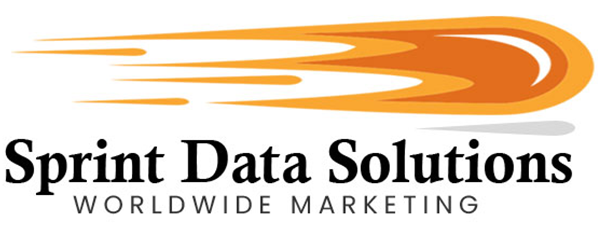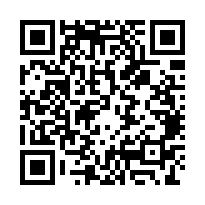Students Are A Growing Marketing Demographic If You Can Reach Them
While younger children often view school as a tedious interruption to play and leisure, education remains one of the most vital indicators of a civilized and forward-thinking society. The true purpose of education goes far beyond memorizing facts—it is about preserving the collective knowledge, values, and discoveries of humanity, and transmitting them to future generations. This process ensures that the wisdom gained over centuries is not lost, but rather, used as a foundation for new innovation and progress. Without education, we would not have eradicated deadly diseases, developed life-saving medical procedures, launched satellites into orbit, or created the interconnected digital world we rely on today. The very fabric of modern civilization—from infrastructure and communication to governance and science—rests on the steady transmission and expansion of knowledge.
However, the path to meaningful education is neither simple nor effortless. For children, the routine of school can feel like a burden, especially when they are too young to appreciate its long-term value. Yet, as people mature, they come to understand how critical education is to personal growth and professional success. Whether it’s a doctor diagnosing illnesses, an engineer building bridges, a coder developing cutting-edge software, or a tradesperson installing complex electrical systems—each relies heavily on specialized training and education. In a world where technology and industry are evolving rapidly, access to quality education is not just beneficial, but essential for individuals and nations alike to thrive in an increasingly competitive global landscape.

The Challenges
The landscape of education in the United States is undergoing profound transformation, creating significant uncertainty for today’s students. For much of the 20th century and even into the early 2000s, there was a well-established path to success: earn a high school diploma, go to college, graduate with a degree, and secure a stable, well-paying job. This linear trajectory was widely accepted, and higher education was often seen not just as a stepping stone but as a near-guaranteed gateway to upward mobility. Today, while a college degree still holds substantial value—particularly for professions like medicine, law, and academia—the path to financial and career success has diversified considerably. New and evolving industries have elevated the relevance of vocational education, trade certifications, and technical skills training, sometimes offering comparable or even superior income potential compared to traditional degree-based careers.
Fields such as software development, digital media production, renewable energy, construction management, and cybersecurity are now seen as lucrative and forward-thinking choices. These career paths often require specialized skills rather than a four-year college diploma, and they come with the added benefit of reduced educational debt and earlier workforce entry. Despite the shifting paradigms, the conversation around education cannot ignore the financial strain students face. The cost of post-secondary education has ballooned to unprecedented levels, far outpacing inflation and wage growth. Today’s students are frequently burdened by student loans that can take decades to repay, significantly impacting their financial freedom and future stability. The narrative that a summer job can cover tuition is not only outdated—it’s dangerously misleading in today’s economic reality.
This economic pressure is compounded by a broader financial challenge: for the first time in modern history, an entire generation is on track to be less financially secure than their parents. The factors are numerous—stagnant wages, inflated housing markets, fewer benefits, and of course, massive educational expenses. Older generations who may not be fully attuned to these systemic shifts often struggle to grasp the extent of the challenge. They may view the current struggle through the lens of their own experience, failing to recognize how much the socioeconomic terrain has shifted. As a result, students today must navigate a far more complex, expensive, and multifaceted world—one where success requires not just hard work but also strategic planning, adaptability, and often, a redefinition of what educational success truly looks like.
The Marketing Opportunities
As challenging as the educational landscape may be for young Americans today, one enduring truth remains: this stage in life often marks a turning point toward independence. Even during high school years, many students—especially those receiving sizable allowances or part-time income—begin taking financial control of their own decisions. Rather than relying solely on parental assistance, they increasingly purchase products or sign up for services of their own choosing, signaling the early stages of economic autonomy.
It is during the college years, however, that this independence truly solidifies. For most students entering tertiary education, this period represents their first experience with real financial responsibility. It is often here that young adults encounter debt for the first time, not just in the form of tuition fees or student loans, but also through ancillary financial tools such as personal bank accounts, credit cards, and budgeting apps. They are now legally recognized as adults, empowered—and expected—to make binding decisions, sign contracts, and manage the consequences of their financial behaviors. While parental advice may still play a role, the onus increasingly shifts to the students themselves to navigate this new economic territory.
This shift presents a significant opportunity for businesses and marketers. A new, highly specific demographic emerges—young adults in need of education-centric products and services that align with their immediate priorities and long-term goals. From financial planning tools and academic resources to technology products and lifestyle services, offerings tailored to support their college journey are most likely to resonate and convert.
Sprint Data Solutions Worldwide Marketing is uniquely positioned to serve this market. The company maintains comprehensive and up-to-date databases of student demographics, segmented not only by traditional categories such as age, location, and educational institution, but also by psychographic factors and specific needs. Whether you’re targeting first-year students navigating financial aid, seniors preparing for post-college careers, or young adults pursuing graduate programs, Sprint Data Solutions provides refined, actionable data to connect you with these emerging consumers in meaningful and effective ways.
Educational Seekers
The largest demographic within the education sector is, unsurprisingly, the broad group of individuals actively seeking formal education opportunities. This group can be further segmented into those pursuing academic degrees from colleges and universities, as well as individuals aiming for diplomas or certifications from technical institutes, trade schools, or vocational programs. Regardless of the path chosen, the unifying goal across this demographic is the acquisition of structured knowledge validated by an official credential—such as a diploma, certificate, or degree—that acknowledges their proficiency in a specialized field. This demographic is remarkably diverse in terms of age and life stage. It includes high school graduates applying to undergraduate programs, mid-career professionals seeking advanced degrees to enhance their qualifications, and even retirees embarking on lifelong learning journeys or shifting careers. The widespread appeal of formal education spans across socioeconomic backgrounds, cultures, and personal ambitions, making it one of the most expansive and dynamic audience segments in the educational landscape.
Student Financial Assistance Seekers
In previous decades, pursuing a post-secondary education was significantly more affordable. Many students managed to cover tuition costs through part-time or summer employment, while others relied on modest savings from their families to complete their degrees without incurring debt. This has changed dramatically over time. Today, with rising tuition fees and living expenses, the majority of students—excluding those from affluent backgrounds—require some form of external financial assistance to afford higher education.
Student loans have become a central component of the modern academic journey, with various financing options tailored to different financial situations and educational goals. In addition to government-backed loans and private lending options, there are grants, scholarships, and work-study programs designed to support students with differing needs. It’s equally important to consider the broader financial ecosystem that supports student life. Students must often budget carefully for essentials such as food, transportation, clothing, housing, and technology—necessities that can strain limited resources. As a result, financial literacy and access to budget-friendly services and tools are now essential to helping students manage their overall cost of living while also staying on top of loan obligations. These factors highlight the increasingly complex and interdependent nature of financing a modern education.

Online Class Seekers
The shift to online remote learning, initially driven by the global pandemic as a measure to maintain health and safety, has since evolved into a transformative force in the world of education. For many individuals, especially those balancing full-time jobs, caregiving responsibilities, or residing in geographically isolated areas, the accessibility and flexibility of online education has opened doors previously closed. No longer constrained by the traditional academic calendar or the need to relocate near a physical campus, learners can now pursue academic degrees, vocational training, or skill-specific certifications entirely online. This democratization of education is particularly empowering for adult learners and non-traditional students who might have otherwise been excluded due to time, financial, or logistical limitations.
The growing popularity of virtual classrooms has also created new opportunities in related markets. As students strive to create productive learning environments at home, demand has surged for products that enhance digital learning experiences. Essential tools like noise-canceling headsets, high-quality microphones, webcams, and portable speakers are now integral to virtual participation. In addition, concerns over privacy and data protection in an online learning environment have highlighted the importance of cybersecurity tools such as VPN services, antivirus software, and secure cloud storage solutions. With a vast and diverse demographic engaging in online education—from high school students to working professionals—there is a wide range of potential consumers for these auxiliary products and services. Consequently, marketing strategies tailored to this segment can yield significant returns while supporting the growing ecosystem of remote learners.
Trade School Financial Assistance
While universities have long been associated with high tuition fees, trade schools and technical colleges—despite not offering traditional degree programs—are now also becoming significant financial commitments for students. These institutions specialize in providing practical, job-focused training for careers in fields like automotive repair, welding, healthcare technology, and computer networking. Ironically, although these careers are in high demand and often come with competitive salaries, the specialized training required to enter them can be expensive. The irony is compounded by the fact that many students choose trade schools specifically because they are seeking a more affordable, quicker alternative to university education.
Financial accessibility remains one of the largest hurdles for prospective trade school students. Many come from lower-income backgrounds and may lack the credit history or collateral necessary for private loans. While some trade schools offer federal financial aid, scholarships, or payment plans, these options can still fall short of covering the full cost of tuition, tools, and certification exams. Moreover, students often juggle part-time jobs, family responsibilities, and intensive coursework, making time and budget management tools especially important. Support services like financial counseling, time management workshops, and flexible class scheduling can greatly enhance student success and reduce dropout rates. In this context, providing robust support infrastructure is not just beneficial—it’s essential.
Student Debt Leads
For today’s college graduates, navigating the 21st century often begins with the heavy burden of student loan debt—a financial weight that, for many, feels insurmountable. With tuition fees soaring and wages struggling to keep pace, this debt has become a defining feature of early adulthood. If this generation is expected to achieve the milestones that were once considered standard—such as purchasing a vehicle, owning a home, or starting a family—addressing student debt cannot remain optional; it must be prioritized on both personal and policy levels.
Graduates burdened by loans are consistently open to innovative financial services designed to lighten the load. Offerings like income-driven repayment plans, refinancing options, or debt counseling have become crucial. Moreover, tools that support broader financial wellness—such as budgeting apps, access to affordable housing, or discounted transportation and food options—play a vital role in keeping young adults financially stable. Empowering them with practical, cost-saving resources not only aids in debt management but also allows them to contribute more fully to the economy and society as a whole.
Student Continuing Education Seekers
For many individuals, the pursuit of education has long been a cherished aspiration—one that was often postponed due to life’s pressing responsibilities. Prioritizing the needs of a growing family, building a career, and maintaining financial stability frequently meant placing personal academic goals on hold. However, as time passes and children become independent, forging their own educational and professional paths, a window of opportunity reopens. It’s during this phase that many adults, particularly seniors, find themselves revisiting the dream of completing their education or exploring new fields of study.
Seniors who return to school represent a unique and growing demographic. Unlike traditional students who often focus on degrees for career advancement, these learners are typically driven by a deep, intrinsic motivation—a love for knowledge and a desire for intellectual enrichment. Many of them are financially secure, either retired or semi-retired, which allows them to engage in learning without the pressure of immediate economic return. Their goals are often rooted in personal growth, staying mentally active, or fulfilling lifelong curiosities.
This demographic is particularly receptive to a wide array of products and services tailored to their needs. From flexible online courses and senior-friendly tech tools to educational travel programs and wellness offerings that support cognitive health, the continuing education journey for older adults can be deeply rewarding. Businesses and institutions that understand this audience’s values—such as accessibility, relevance, and quality of experience—can effectively support and engage these lifelong learners as they embark on this exciting chapter.
College Location
For many students, being accepted into college often comes with the life-changing experience of relocating to a new city or town. This transition brings not only academic opportunities but also the need to become familiar with an entirely new environment—finding housing, navigating local transit, and identifying places for daily needs. For local businesses, this annual influx of students presents a unique and recurring opportunity to connect with a fresh customer base. Whether it’s restaurants hoping to attract loyal patrons, fitness centers offering student deals, coffee shops establishing regulars, or supermarkets providing essentials like food, toiletries, and laundry supplies, targeting these newcomers with tailored offers and promotions can create lasting relationships. With the right outreach strategies, businesses can position themselves as essential and welcoming parts of students’ new lives, turning orientation season into a season of growth.
College Requirements
For most students, gaining admission to college—especially to a highly competitive, top-choice institution—is an intense and often overwhelming process. It requires more than just good grades; few can afford to put in minimal effort and still gain acceptance to their dream school. Beyond academic qualifications, students must navigate a complex web of additional criteria, such as standardized test scores, extracurricular achievements, recommendation letters, and personal statements that reflect their individuality and potential. On top of the admissions hurdles, practical concerns like affordability, housing, and proximity to home weigh heavily in the decision-making process. Because of these numerous factors, students and their families are constantly searching for tools, services, and resources that can support their academic preparation, financial planning, and logistical arrangements—making this an ideal opportunity to market relevant solutions tailored to their unique college journey.
Degree Counselling Or Tuition Assistance
Once a student has secured admission into a school, the real journey begins. Gaining acceptance is only the first step; the real challenge lies in consistently performing well throughout the course of study. This includes attending lectures, engaging in assignments, and ultimately passing the critical exams that lead to earning a degree, diploma, or professional certification. While some students are naturally independent learners, many benefit immensely from structured support systems. Academic success often hinges not just on individual effort but on access to the right tools and guidance. This is where supplementary resources become essential—ranging from subject-specific tutoring to academic mentoring. Moreover, counseling services can play a vital role in helping students make informed decisions about their educational path. Through degree planning sessions, students can choose majors and minors that align with their career aspirations. Financial advisory support also helps navigate tuition costs and available funding options. In more rigorous or unfamiliar academic fields, targeted assistance and strategic counseling can significantly ease the learning curve and enhance a student’s ability to thrive.
Career Placement & Career Counseling
Before entering tertiary education—and even while pursuing it—committing to a specific career path can feel overwhelming for many students. Despite being legally considered adults, many post-secondary students are still in the process of self-discovery and may not yet have a clear understanding of their long-term professional goals. They often need more time, guidance, and exposure to different fields before making an informed decision about their future occupations.
This is where career placement and counseling services play a crucial role. These services not only offer personalized guidance but also help students evaluate their strengths, interests, and potential career paths. They often provide access to assessments, job shadowing opportunities, internships, and mentoring programs that give students a real-world perspective on various professions. Furthermore, they can connect students with workshops, career fairs, resume building sessions, and networking events that enhance job readiness.
Equally valuable are the resources that introduce students to alternative career routes or lesser-known industries that align with their evolving skills and aspirations. Supplementary training programs, certifications, and orientation sessions are especially beneficial in this phase, empowering students to make confident, well-informed decisions. Businesses and service providers targeting this demographic should prioritize tools and platforms that foster exploration, adaptability, and personalized career planning, as these are highly valued by students navigating the transition from education to the workforce.
Military Veterans Seeking Continued Education
Veterans transitioning from military service back into civilian life have made profound sacrifices—not only by risking their lives but by putting personal milestones on hold. Many devoted the formative years of their youth to serving the nation, often postponing or entirely forgoing post-secondary education in the process. For some, financial limitations made attending college or vocational training impossible before or after service. Now, with the support of programs like the Post-9/11 GI Bill and other veteran education benefits, they have the chance to pursue the education they once set aside. This new chapter opens doors to a wide range of opportunities and needs. From essential academic tools like laptops, tablets, and software to practical items such as backpacks, business attire, and transportation solutions, veterans reentering school life require products and services tailored to their unique circumstances. Businesses and educational institutions alike have a vital role to play in easing this transition, ensuring that those who once served with honor can now thrive in the classroom and beyond.

How Sprint Data Solutions Worldwide Marketing Can Help
Sprint Data Solutions Worldwide Marketing has developed a robust, multifaceted database infrastructure that serves as a cornerstone for highly targeted marketing initiatives. This database is the product of years of meticulous data collection efforts, carried out exclusively through ethical, transparent, and legally compliant means. These include opt-in mechanisms such as account registrations, newsletter subscriptions, voluntary survey participation, and professional networking engagements like the donation of business cards at industry events. To maintain data integrity and ensure ongoing relevance, the databases are regularly vetted, verified, and updated, incorporating both internal auditing and feedback-driven refinements. This is particularly vital in fluid segments like the student demographic, which undergoes constant turnover as new cohorts enroll and others graduate. The need for up-to-date contact information is essential to maximize client campaign effectiveness and maintain high engagement rates.
In tandem with these human-curated practices, Sprint Data Solutions leverages advanced artificial intelligence systems and machine learning algorithms to perform dynamic data analytics. These technologies analyze behavioral patterns, infer relevance, and assign predictive value to contact records, based on the specific search parameters and conversion goals defined by clients. The AI doesn’t just help identify appropriate contacts—it enhances targeting accuracy by prioritizing recipients statistically more likely to engage meaningfully with a given campaign. This intelligence-led approach significantly improves response rates and return on investment, providing clients with a strategic advantage in an increasingly competitive digital marketing landscape.
A key structural feature of Sprint’s databases is their deep geographical granularity. Campaigns can be launched at a macro level—reaching audiences across the entire United States—or scaled down to suit regional, state, or hyperlocal objectives. Whether the goal is a sweeping national outreach or a niche campaign focused exclusively on a micro-neighborhood, such as students living in North Cambridge within the greater Cambridge area, the system offers precise locational targeting. This is especially valuable for institutions and businesses that operate in localized markets or serve geographically specific communities, such as universities or municipal initiatives.
Beyond geography, the contact data is further segmented by a wide range of demographic indicators, enabling campaign personalization at an unprecedented level. Clients can filter records by age, gender, ethnicity, religion, economic status, and health conditions, among other criteria. For instance, a financial institution promoting a student loan tailored to low-income households can specifically reach economically disadvantaged students. Similarly, healthcare providers can directly communicate with students managing chronic conditions like diabetes. Cultural or religious events, such as those pertinent to Jewish or Asian American communities, can also be promoted through demographically-aligned outreach. This multidimensional segmentation empowers clients to craft messages that are not only relevant but also respectful and resonant, driving higher impact and fostering stronger audience connections.
Contact Formats & More
Sprint Data Solutions Worldwide Marketing offers comprehensive database services tailored to meet client-specific requirements across various formats. Whether targeting consumers or business professionals, clients can access contact data in forms most suitable for their campaigns. For direct mail marketing initiatives, physical mailing addresses are provided, with segmentation available for general consumer outreach or precise B2B targeting. Email marketing efforts are equally supported through verified individual and corporate email lists, ensuring high deliverability and engagement rates. For strategies that rely on real-time, personal engagement, telephone numbers are available, including residential landlines for household targeting and direct lines to business decision-makers—bypassing generic gatekeepers like receptionists. Additionally, mobile numbers are included for clients executing SMS/text-based promotional campaigns, further extending campaign reach.
Beyond data provision, Sprint Data Solutions offers a suite of value-added services to ensure marketing success from start to finish. A standout option is the company’s fully integrated, turnkey direct mail marketing solution, ideal for businesses without prior experience in print-based outreach. This end-to-end service encompasses every phase of the campaign—beginning with strategic planning and creative concept development, moving through professional printing, and culminating in precise, efficient distribution. All these stages are executed in-house, streamlining operations and eliminating the need for clients to vet multiple third-party vendors. This cohesive, vertically integrated approach not only simplifies execution but also enhances quality control and reduces time-to-market for campaign rollouts.
If you’re looking to market a product or service to students, Sprint Data Solutions Worldwide Marketing has the tools to help you succeed. We offer access to highly targeted education leads, including verified student databases segmented by age, academic level, geographic location, field of study, and more. Whether you’re promoting tutoring services, educational software, student discounts, or school supplies, our leads can help you connect with the right audience at the right time. Reach out to Sprint Data Solutions today and let us power your campaign with the education marketing data that delivers real results.






